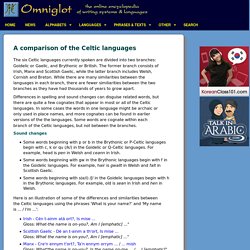

Creation Story of the Maya. The Weather and Climate in Central America. Central America has an overall humid, tropical climate with distinct dry and rainy seasons throughout the region.

However, the weather can vary from country to country, and some countries have multiple climate zones. Typically, in mountainous areas, temperatures dip lower than those in areas with lower elevation, but usually no colder than around 50 degrees Fahrenheit (10 degrees Celsius). And temperatures in the hottest areas of the region typically top out just below 90 degrees Fahrenheit (32 degrees Celsius). The exception to this overview is Guatemala, which can see temperatures range from freezing to the 100 degrees Fahrenheit (38 degrees Celsius), depending on where you are and when you are visiting. Hurricane Season in Central America Central America also has a distinct wet season (also known as "green season" because of the lusher landscape during this season), but the months can vary slightly around the region, so check the country-specific information below.
Buddhist and Hindu mythology. Buddhist and Hindu mythology Alternative Titles: Bishamon, Jambhala, Rnam-thos-sras, To-wen, Vaiśravaṇa, Vaishravana Kubera, in Hindu mythology, the king of the yakshas (nature spirits) and the god of wealth.

He is associated with the earth, mountains, all treasures such as minerals and jewels that lie underground, and riches in general. According to most accounts, he first lived in Lanka (Sri Lanka), but his palace was taken away from him by his half brother, Ravana, and he now resides in a beautiful mountain residence near the god Shiva’s home on Mount Kailasa, where he is attended by all manner of demigods.
The Mythology of Tibetan Mountain Gods: An Overview. By Xie Jisheng The Tibetan Mountain Gods There are countless high mountains in Tibet, and ancient Tibetans believed that Gods resided on every one of them.

Tibet - Government and society. The arts Tibet is most renowned for its religious scroll paintings (thang-ka), metal images, and wooden block prints.

Languages spoken in Tibet, Tibet Language guide, Languages in Tibet. Tibet’s history and culture. Tibetans speak a number of languages.

These are completely separate from Chinese languages, and all of them are currently threatened by the aggressive promotion of Mandarin Chinese as the official language of business, education and government. Although the written form of Tibetan is taught in some schools, primary and secondary education is taught predominantly in Mandarin, with Tibetan as a second language. Entrance exams to universities are in Chinese. As a result, some young Tibetans are not literate in Tibetan. Many Tibetans have deep anxieties about the fate of the Tibetan script and of spoken Tibetan, but their efforts to promote the language through education are heavily repressed by the state.
Many Tibetans work to preserve Tibetan culture, such as by running local language classes. Tibetans also speak a number of other languages in addition to Tibetan varieties; linguists estimate that Tibetans in China speak about 30 distinct non-Tibetan languages. Tibet Climate. The climate in Tibet belongs to the typical high-altitude plateau climate.

Climates are much different in different areas in Tibet and temperatures vary greatly within a single day. The climate in southeastern Tibet (e.g. Nyingchi) is gentle and temperate, with an average temperature of eight degrees; in western Tibet (e.g. Legend of the Banshee. What is a Banshee?

A Banshee is said to be a fairy in Irish legend and her scream is believed to be an omen of death. The scream is also called ‘caoine’ which means ‘keening’ and is a warning that there will be an imminent death in the family and as the Irish families blended over time, it is said that each family has its own Banshee! A Banshee is a disembodied spirit and can appear in any of the following forms: A beautiful woman wearing a shroudA pale woman in a white dress with long red hairA woman with a long silver dress and silver hairA headless woman carrying a bowl of blood that is naked from the waist upAn old woman with frightening red eyes, a green dress and long white hairAn old woman with a veil covering her face, dressed all in black with long grey hair Banshees are often dipicted as women spirits with long hair who scream through the night.
Origins Banshees – The Good & Bad. Ireland Population 2020 (Demographics, Maps, Graphs) Ireland's 2020 population is estimated at just over 4.94 million, according to the most recent UN projections.

When discussing the population of Ireland, it’s important to make a distinction between two territories that are separated politically. English Historical Fiction Authors: Celtic Government and Society. By Annie Whitehead In this series examining the lives of the peoples known as The Celts, I’ve looked at their origins, how they lived, the members of the community, and their occupation and leisure activities.

Now, in the final post on this topic, I’m looking at their Government and Social Structure. Among the Celtic tribes, the form of government was either monarchical or oligarchical. The Bretons were governed by several kings and chiefs, while the Caledonii had a democratic government. In Gaul and the British Isles, the power of the king was probably not very great, as they were almost certainly chosen by the people and could be easily deposed if the need arose. In some tribes, there seems to have been a chief magistrate, “Summus Magistratus.” A comparison of the Celtic languages. The six Celtic languages currently spoken are divided into two branches: Goidelic or Gaelic, and Brythonic or British.

The former branch consists of Irish, Manx and Scottish Gaelic, while the latter branch includes Welsh, Cornish and Breton. While there are many similarities between the languages in each branch, there are fewer similiarities between the two branches as they have had thousands of years to grow apart. Differences in spelling and sound changes can disguise related words, but there are quite a few cognates that appear in most or all of the Celtic languages.
British Isles: Temperature & Rainfall. The Celts - Origin, Religion, Language. The object of these notes, as the title implies, is to express the writer's ideas and opinions. One culture which unwittingly has caused much confusion in people's minds is that of the Celts. In recent centuries the problem seems to have begun with the antiquarian William Stukeley (1687 - 1765) who associated such ancient monuments as Stonehenge and Avebury with the Celtic Druids, unaware of course that such monuments predated the Celtic Druids by a couple of millennia.